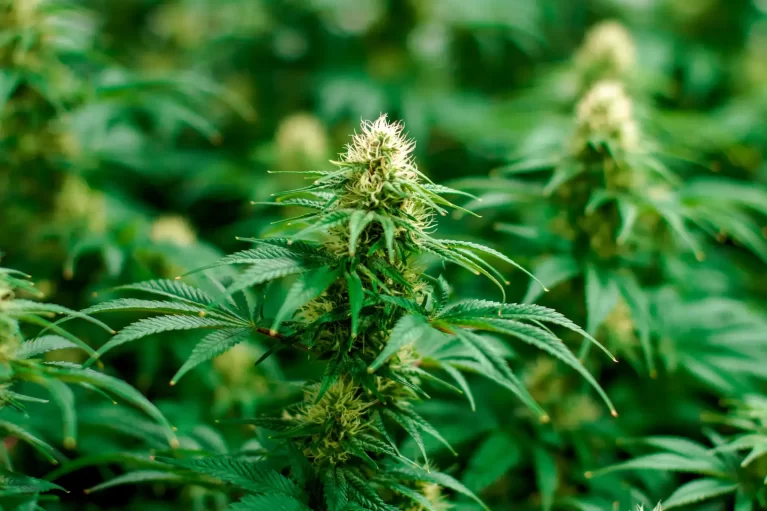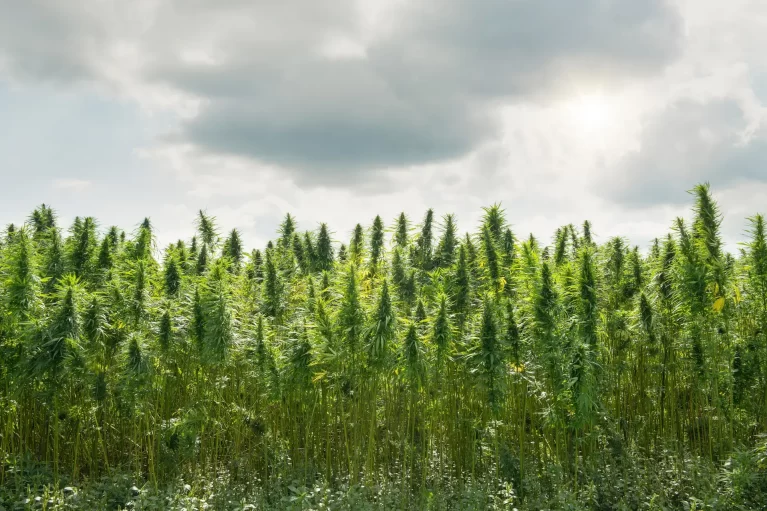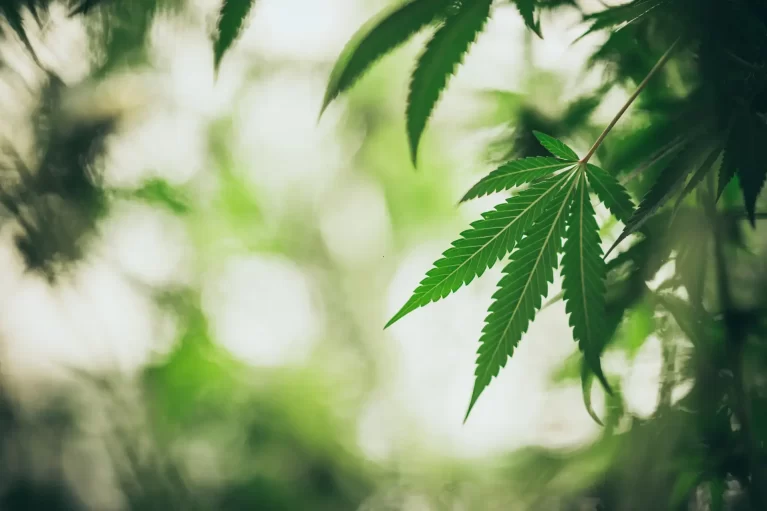Indica seeds are the foundation of one of the two primary species of cannabis plants, known for their unique characteristics and potent effects. Originating from the mountainous regions of Afghanistan, Pakistan, and India, these seeds produce plants that are typically shorter and bushier compared to their sativa counterparts. The robust nature of indica plants makes them particularly suited for cultivation in cooler climates. When you buy indica seeds from Premium Seed Market, you are investing in a strain that offers a range of benefits, from ease of growth to the production of dense, resinous buds.
Indica vs. Sativa: Key Differences
Growth Patterns and Plant Structure
When comparing indica vs sativa, one of the most noticeable differences is in their growth patterns and plant structure. Indica plants are typically short and bushy, characterized by their wide, broad leaves and a compact growth habit. This makes them particularly well-suited for indoor growing environments where vertical space is limited. Their shorter stature, usually not exceeding 3 to 4 feet in height, allows for easier management within confined spaces. The dense foliage of indica plants can create a canopy effect, which helps maximize light absorption and can result in higher yields in limited areas.
Sativa plants exhibit a different growth pattern. They are known for their tall, lanky structure and can sometimes reach heights of up to 20 feet in optimal outdoor conditions. Sativa plants have narrow, elongated leaves and a more open, airy structure that allows for better light penetration and air circulation throughout the plant. The tall and slender nature of sativa plants also helps them thrive in warm, tropical climates where they can stretch toward the sunlight.
Unique Growing Conditions
Growing indica plants successfully requires knowledge of their specific growing conditions. Indica plants thrive in cooler climates, with ideal temperatures ranging between 60-75°F (15-24°C), and are more resistant to cold temperatures than sativa plants, which prefer warmer climates with temperatures between 70-85°F (21-29°C). They also have a shorter flowering period, typically ranging from 6 to 8 weeks, which allows for multiple harvests in a year if grown indoors. On the other hand, sativa plants prefer warmer climates and have a longer flowering period, often taking 10 to 16 weeks to mature.
Benefits of Indica Strains
Indica strains are known for their high resin production, which results in buds that are dense and sticky. This makes them an excellent choice for those looking to produce hash or other concentrates. The sedative effects of indica strains are highly valued for their ability to promote relaxation and alleviate pain. These effects are primarily due to the higher CBD content and the presence of certain terpenes that contribute to their relaxing properties. This makes them particularly beneficial for medical cannabis users who need relief from conditions such as insomnia, anxiety, and chronic pain.
Types of Cannabis Indica Seeds
Regular vs. Feminized Indica Seeds
There two primary types of cannabis indica seeds: regular and feminized. Regular seeds can produce both male and female plants, which means growers must identify and remove male plants to prevent pollination and seed production. This requires additional effort and expertise, as male plants can reduce the quality of the harvest. Feminized indica seeds are genetically modified to produce only female plants, ensuring a higher yield of resinous buds.
Choosing the Right Type for Your Needs
Selecting the right type of indica seeds for your needs depends on several factors, including your level of experience, the resources available, and your cultivation goals. If you are new to growing cannabis or prefer a simpler process, buying feminized indica seeds from Premium Seed Bank is the best option.
Ideal Growing Conditions for Indica Seeds
Climate and Soil Requirements
Ideal temperatures for growing indica plants range between 60-75°F (15-24°C). They thrive in well-draining soil rich in organic matter. The pH level of the soil should be slightly acidic, between 6.0 and 7.0, to ensure optimal nutrient absorption. Proper soil preparation includes mixing in compost or other organic materials to enhance fertility and drainage.
Setting Up an Indoor Growing Environment
Creating an optimal growing environment for your indoor indica cannabis seeds involves careful planning and investment in the right equipment. The goal is to mimic natural conditions as closely as possible to ensure healthy plant growth. Here are the key steps to set up an effective indoor growing space:
- Choose the Right Space: Select a dedicated space such as a grow tent or a spare room. Ensure it is clean and can be easily ventilated. The chosen area should be away from daily disturbances and have easy access to electrical outlets for lighting and other equipment. Proper insulation will help maintain the desired temperature and humidity levels.
- Lighting: Use high-quality grow lights, such as LED or HPS lamps, to provide the necessary light spectrum for all growth stages. LEDs are energy-efficient and have a longer lifespan, while HPS lamps are known for their intense light output, which is beneficial during the flowering stage. Position the lights to cover the entire growing area evenly, adjusting the height as the plants grow.
- Temperature Control: Maintain a consistent temperature between 60-75°F (15-24°C) during the day and slightly cooler at night. Use heaters or air conditioners as needed to achieve this. Temperature fluctuations can stress the plants, so consider using a thermostat to monitor and regulate the environment continuously.
- Humidity Levels: Keep humidity levels higher during the vegetative stage and reduce it during flowering. Dehumidifiers can help manage moisture levels. Proper humidity control prevents mold and mildew, which can damage the plants and reduce yield. Hygrometers can be used to monitor humidity levels accurately.
- Ventilation: Install fans and exhaust systems to ensure good air circulation and to prevent mold and mildew. Fresh air exchange is crucial for maintaining CO2 levels, which are essential for photosynthesis. Inline fans, oscillating fans, and carbon filters can work together to keep the air clean and circulating properly.
- Soil and Nutrients: Use high-quality, well-draining soil and provide a balanced nutrient regimen tailored to the growth stages of the plants. Organic soils enriched with compost or other amendments can provide a healthy base, while liquid or granular fertilizers can supplement specific nutrient needs during different growth phases.
- Watering System: Set up a reliable watering system, whether manual or automated, to ensure consistent moisture without overwatering. Drip irrigation systems or self-watering pots can help maintain the right balance. Overwatering can lead to root rot, while underwatering can stunt growth, so it’s important to find the right balance.
By following these guidelines, you can create a controlled space that supports the robust growth of your indica seeds. Remember, the key to successful indoor gardening lies in the continuous monitoring and adjustment of the growing conditions to meet the needs of your plants.
Pest and Disease Management
Common Pests and Diseases Affecting Indica Plants
Growing indica seeds can be a rewarding endeavor, but it also comes with challenges, such as dealing with pests and diseases. Common pests that affect indica plants include spider mites, aphids, and whiteflies. These insects can cause significant damage by feeding on the plant’s sap, leading to weakened plants and reduced yields. Diseases such as powdery mildew, root rot, and bud rot are also prevalent and can devastate a crop if not managed properly.
Prevention and Treatment Strategies
Maintaining the health of your indica plants requires a proactive approach with effective prevention and treatment strategies. Below are steps to protect your crop, providing a comprehensive guide to effective plant care:
- Clean Growing Environment: Maintain a clean and hygienic growing environment by regularly cleaning tools, pots, and grow areas. This reduces the risk of pest and disease outbreaks. Disinfecting surfaces and equipment can prevent the spread of pathogens. Regularly removing plant debris and fallen leaves will also help to keep the area clean and less attractive to pests.
- Regular Inspections: Conduct frequent inspections of your plants to catch any signs of pests or diseases early. Look for changes in leaf color, texture, and overall plant vigor. Use a magnifying glass to check for tiny pests like spider mites and aphids on the undersides of leaves. Early detection allows for timely intervention before problems escalate and spread to other plants.
- Integrated Pest Management (IPM): Use IPM practices, which include biological controls like introducing beneficial insects (e.g., ladybugs for aphids) and organic sprays such as neem oil to manage pests without harmful chemicals. Combining multiple strategies, such as crop rotation and companion planting, can enhance the effectiveness of pest management. The goal of IPM is to minimize pest damage while reducing reliance on chemical pesticides.
- Proper Ventilation: Ensure good air circulation in your growing area to prevent the buildup of humidity, which can lead to mold and mildew. As mentioned previously, use fans and exhaust systems to keep the air moving.
- Resistant Strains: Choose pest- and disease-resistant strains when you see indica seeds for sale. Some strains are naturally more robust and less susceptible to common issues. Researching and selecting strains that are known for their hardiness can save time and effort in managing plant health. Resistant varieties are bred to withstand common pests and diseases, reducing the need for chemical treatments.
- Natural Remedies: Employ natural remedies such as garlic spray, hydrogen peroxide solutions, and baking soda mixtures to treat mild infestations and infections. These are less harmful to the environment and your plants. Natural remedies can be effective for managing minor issues without introducing harmful chemicals into your growing environment. Regular application of these solutions can help keep pests and diseases under control.
Implementing these prevention and treatment strategies is crucial for maintaining the health and vitality of your indica plants. By being proactive and attentive, you can create an
environment that promotes strong, resilient growth and minimizes the risk of pests and diseases.
environment that promotes strong, resilient growth and minimizes the risk of pests and diseases.
Maintaining Plant Health
Regular pruning and training of your plants can improve airflow and light penetration, which in turn can help prevent many common issues. Additionally, keeping a detailed grow journal to track the health and progress of your plants can help you spot trends and make informed decisions about their care.
Growth Cycle of Indica Plants
Stages of Growth from Germination to Harvest
The growth cycle of indica plants spans several distinct stages, each requiring specific care and conditions to ensure optimal development. It begins with germination, where seeds sprout and develop their first roots and shoots. This stage is crucial as it sets the foundation for the plant’s health. Following germination, the seedlings enter the vegetative stage, characterized by rapid growth of leaves and stems. During this phase, the plant focuses on building a strong structure to support future buds. The final stage is flowering, where the plant shifts its energy to produce dense, resinous buds. Understanding each stage’s unique requirements is key to successful cultivation.
Ideal Harvest Time
The optimal harvest time is typically when the majority of the plant’s trichomes, the tiny resin glands, have turned milky white, with some turning amber. This indicates the peak concentration of cannabinoids and terpenes, which contribute to the plant’s potency and flavor profile. Harvesting too early can result in lower potency while harvesting too late can lead to degraded cannabinoids. Careful observation and timing are crucial. Also, proper drying and curing processes post-harvest are necessary to preserve the quality and enhance the overall smoking or consumption experience.
Buying Cannabis Seeds Online
Reputable Sources for Indica Seeds
When looking to buy indica seeds, it is crucial to choose reputable sources like Premium Seed Market to ensure you are getting seeds that will produce healthy, potent plants. We have a long history of selling high-quality seeds and provide detailed information about the genetics and growing requirements, which will help you make an informed decision.
Online Cannabis Seed Stores
Purchasing indica seeds from Premium Seed Market offers access to a wide variety of strains. We have extensive catalogs that allows you to compare different indica strains based on their characteristics, effects, and growing requirements. The convenience of online shopping allows you to order seeds from the comfort of your home.
Quality Assurance and Selection Tips
High-quality seeds should be dark, tiger-striped, and hard to the touch, indicating they are mature and ready for germination. Additionally, they should feel firm when squeezed gently and have a waxy coating, which indicates they are fresh. Avoid seeds that are green, soft, or have visible cracks, as these are likely immature or damaged and may not germinate properly.
Cultivating indica cannabis seeds offers numerous benefits, including high resin production, strong sedative effects, and significant therapeutic potential for pain relief and anxiety management. These qualities make indica strains highly desirable for both recreational and medicinal users.




